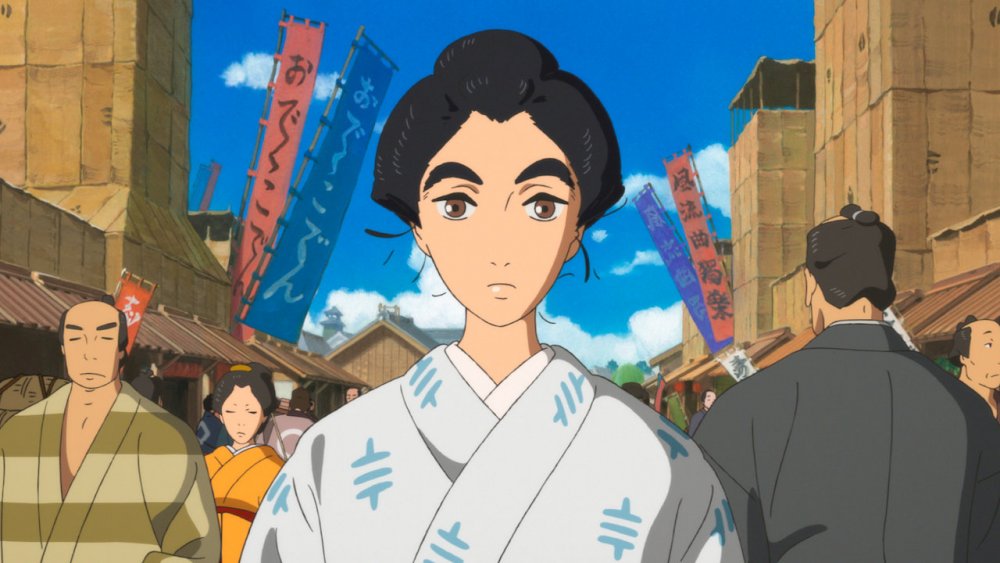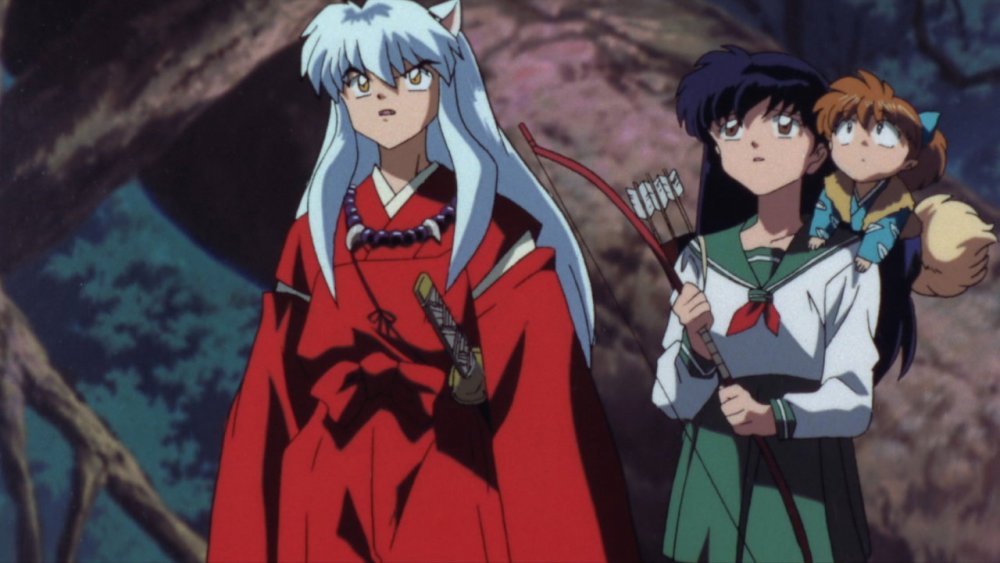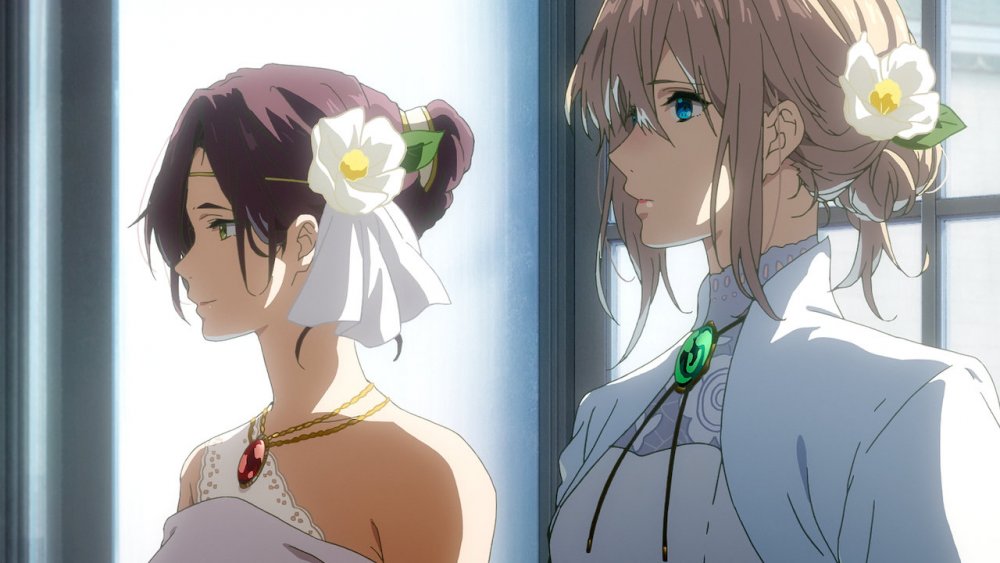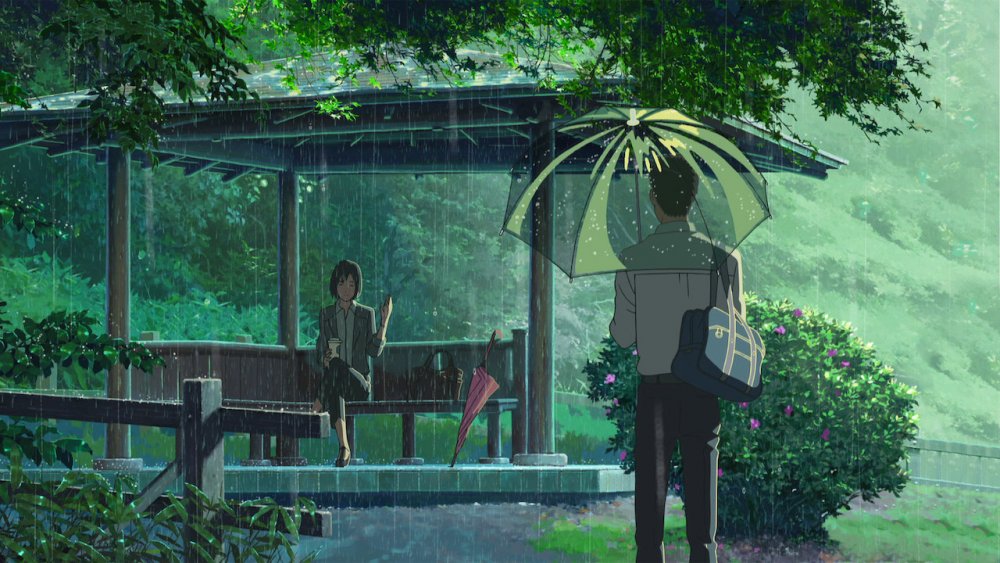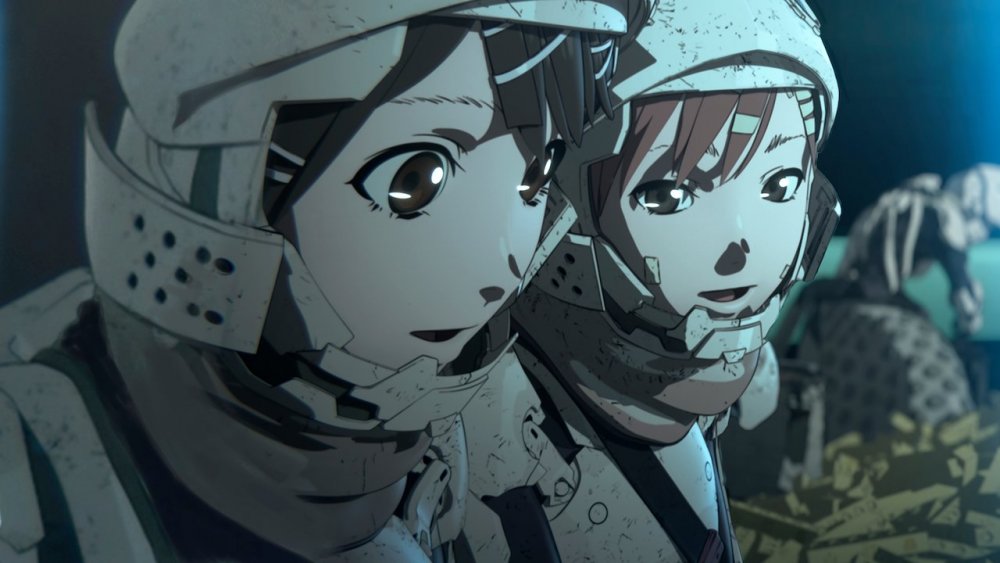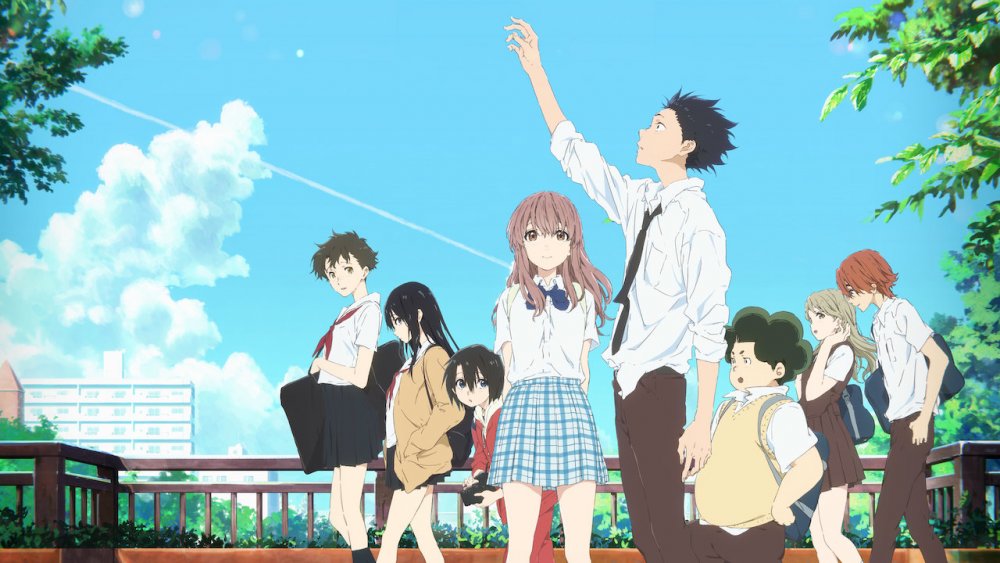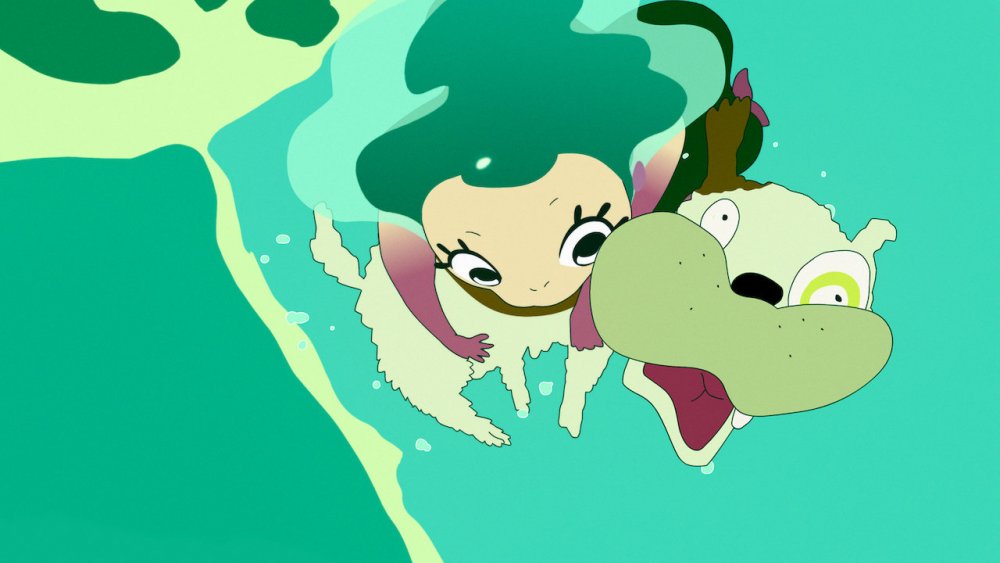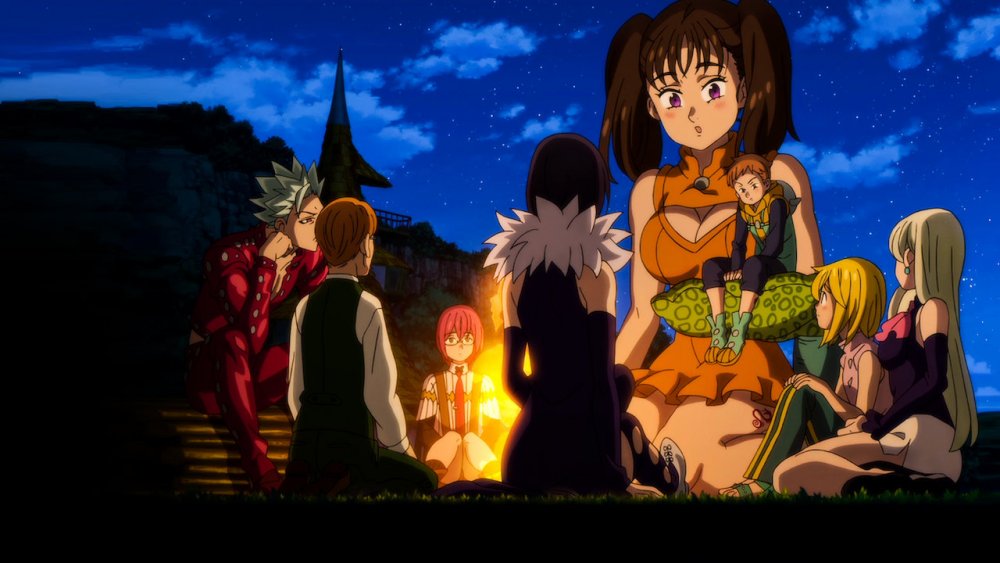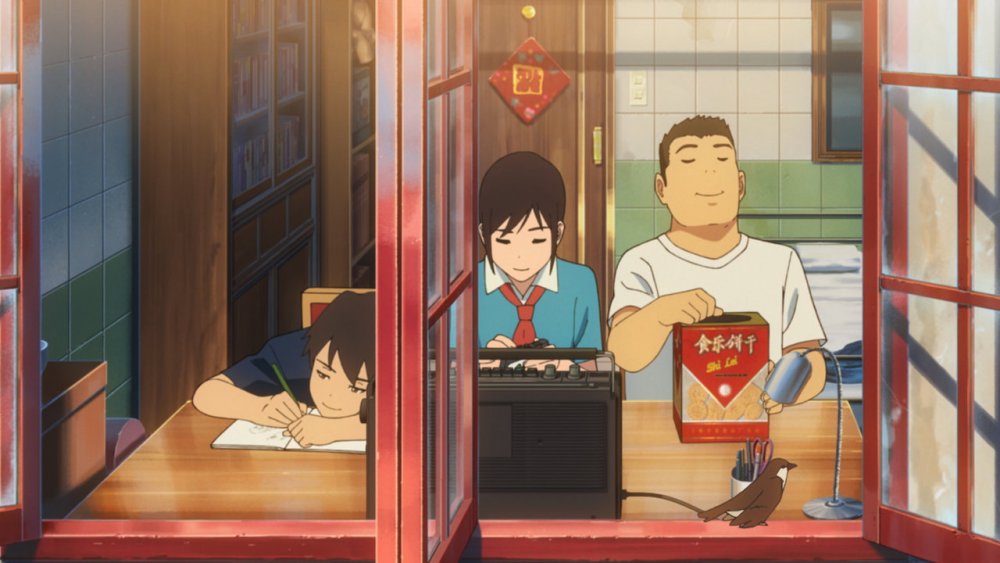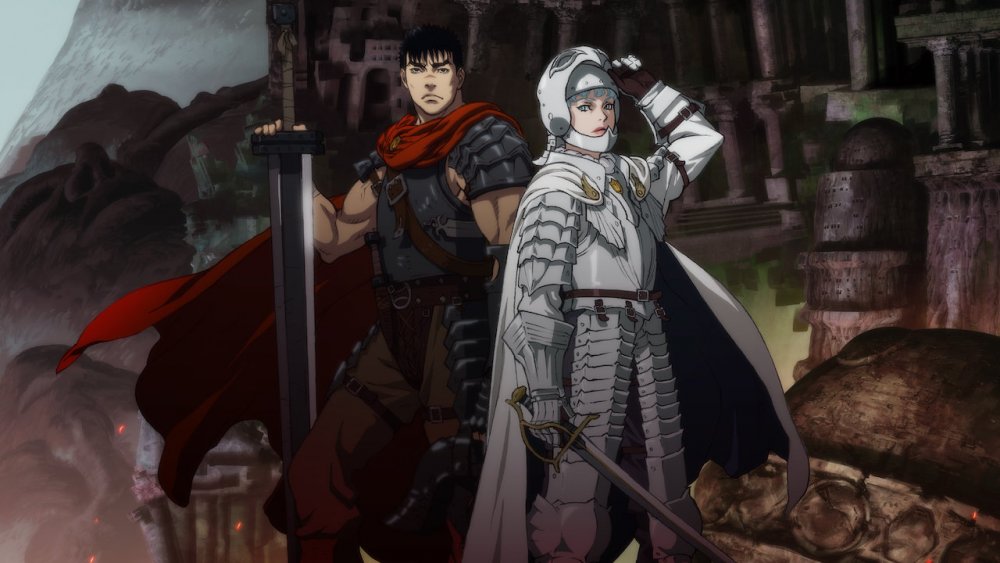Hidden Anime Gems On Netflix You Need To Watch
This content was paid for by Netflix and created by Looper.
Here's the thing about anime: It's a medium, not a genre. Yes, most anime movies share some aesthetic similarities. Yes, they're often — but not always — based on manga, or Japanese comics. Other than that, though, there are no limits. Spiky-haired action heroes, magic-wielding schoolgirls, quirky fairytales, and oddball superhero adventures are just the tip of the iceberg. If you can imagine it, there's probably an anime about it.
That's the good news. The bad? With so much anime out there, it can be hard to pinpoint the movies you're really interested in. That goes double in the west, where the most popular titles dominate the headlines. Sure, there's an anime out there for everyone, but how in the world do you find it?
Well, you can begin by checking out these hidden gems, which span a wide variety of genres, and which serve as an excellent example of what anime is really capable of. Fans who are deep into the anime scene have probably heard of or seen most of those before, but if you're a newcomer who's wondering what all the fuss is about, this is an excellent place to start.
Miss Hokusai
There aren't many animated biopics out there. Judging by Miss Hokusai, maybe there should be. Not that Miss Hokusai is a traditional biography, of course. The movie offers a new perspective on the life of Japanese artist Katsushika Hokusai, the man responsible for the classic woodblock print "The Great Wave off Kanagawa" by shifting the point-of-view to Hokusai's daughter O-Ei.
Like the manga it's based on, Miss Hokusai unfolds over a series of small vignettes that show what life in Japan's Edo era was like for Hokusai — at this point, still known as Tetsuzo — and O-Ei, who is both Tetsuzo's assistant and a talented artist in her own right. In one short story, a client goes mad after O-Ei paints a picture of Hell. In another, Tetsuzo charges O-Ei with creating erotic prints, but as a virgin, O-Ei doesn't have the experience she needs to meet their customers' demands.
Along the way, other artists from the era flit in and out of the movie, as do elements of Japanese folklore and Buddhist philosophy. Miss Hokusai doesn't really have a plot — the closest thing the movie has to a real story is a subplot about Tetsuzo's other daughter, O-Nao, who's essentially abandoned by her father due to her blindness — and not every one of the short stories quite works. Still, Miss Hokusai is an interesting look at a very specific moment in Japanese history, and as you'd expect for a movie that's all about art, it looks absolutely gorgeous.
Inuyasha the Movie: Affections Touching Across Time
Here's what you need to know before watching Inuyasha the Movie: This isn't where the story begins. Like many anime feature films, Inuyasha is a spinoff of a popular anime series, which is itself based on a long-running manga. The Inuyasha anime began airing in 2000, and broadcast 167 episodes before it finished its run in 2004 (a sequel series, Inuyasha: The Final Act, arrived a few years later to give the story a proper conclusion).
Thankfully, Inuyasha the Movie does spend a little bit of time catching you up (and if you're really curious, the series itself is on Netflix, too). Basically, Inuyasha is the story of a high school student named Kagome who falls down a well and travels 500 years into the past, where she teams up with a half-dog, half-humanoid demon named Inuyasha to track down pieces of a magic jewel. In Inuyasha the Movie, one of the jewel fragments revives a demon that Inuyasha's father defeated years ago, forcing Inuyasha to confront his family's legacy and prove that he's every bit the monster-fighter his old man was.
In terms of the overall Inuyasha story, the movie is more of a diversion, but it was written by Katsuyuki Sumisawa, who's responsible for a number of episodes of the ongoing series, and it's a pretty good indicator of what the show is like. If you dig Inuyasha the Movie, don't despair when the credits begin to roll. There's plenty more Inuyasha out there.
Violet Evergarden: Eternity and the Auto Memory Doll
Violet Evergarden is many things. She's a combat veteran, who was known during the war as a fearsome and formidable fighter. She's an adopted member of the Evergarden family, which took her in after the war ended. Finally, she's an Auto Memory Doll who works for the CH Postal Company, meaning that she's basically a ghostwriter who helps pen letters for people who can't write or who have problems expressing themselves — a tricky job, given that Violet's military training makes it difficult for her to relate to others on a basic emotional level.
In Eternity and the Auto Memory Doll, the first feature film spinoff of the Violet Evergarden anime series, Violet adds another title to the list: teacher. See, Isabella, the heir to the York family's fortune, is having trouble. She doesn't fit in at the private girls' school she attends. She isn't interested in the customs and routines that go hand-in-hand with being a member of the upper class. Most importantly, Isabella pines for Taylor, the young orphan who befriended her before the Yorks brought Isabella under their wing.
A lost loved one? Problems relating to others? Yeah, Violet knows all about that. Eternity and the Auto Memory Doll is a side story in the overall Violet Evergarden saga, but it still tackles some heady themes, including classism and gender roles. Historically, it's also an important movie: Eternity and the Auto Memory Doll was the first film released by Kyoto Animation after a deadly arson attack devastated the studio. It wasn't supposed to be a memorial, but given that it's a movie all about dealing with grief, it's hard to imagine a better tribute.
The Garden of Words
If The Garden of Words feels like a personal story, there's a very good reason. The movie isn't exactly a one-man show, but it definitely wouldn't have been made without Makoto Shinkai. The filmmaker, who helmed 2016's international hit Your Name, didn't just direct the movie. He also wrote it, edited it, composed its storyboards, drew the key animation frames, and did all of the compositing.
You wouldn't know from watching, though. Like all of Shinkai's other movies, The Garden of Words features lush and detailed backgrounds, some of which started as photographs, simple but realistic characters, and an innovative and unusual color scheme that makes the animation pop. In fact, the only hint that The Garden of Words was a small production is its length. At only 46 minutes long, it barely qualifies as a movie, although that didn't stop it from getting a theatrical release, a number of awards, and a stage play adaptation.
Besides, The Garden of Words is a small story about a relationship between two people — a 15-year-old would-be cobbler named Takao and a mysterious older woman named Yukari — who spend one special summer meeting each other in the park whenever it rains. Love, heartbreak, and a curiously intimate friendship follow. You might find its climax a little overwrought, but otherwise The Garden of Words is a lovely little film. Given its runtime, it's more than worth a shot.
Blame!
We didn't really need another version of Blame! (which is pronounced "blam," for those of you not in the know). For one, we already have Tsutomu Nihei's original manga, which tells the story of a wanderer named Killy who searches an ever-expanding technological dystopia called the City in search of a way to shut down the Safeguard, a security program that hunts down the City's human inhabitants. We also have a spinoff called Blame Academy!, a parody that takes the characters from the original series and puts them in a modern high school, an original web-based animated series, and two short sequels.
In fact, the Blame! movie wouldn't exist at all if it weren't for a very meta joke in Knights of Sidonia, an anime based on a later Nihei production. In the second season of Knights of Sidonia, Killy makes a brief appearance as the star of an anime that Knights of Sidonia's characters watch. Apparently, Nihei's fans were so excited by the cameo that the writer and artist decided to push ahead with a movie, which arrived a good 14 years after the original manga ended.
Not that the Blame! movie is exactly the same as the comic, of course. For one, Nihei's stark and detailed hand-drawn artwork has been replaced with CGI. For another, the mangaka — who wrote the script for the film — has taken the opportunity to streamline the plot, making it much easier to follow. If you've enjoyed Knights of Sidonia, or if you just want to see what this Nihei guy is all about, the Blame! feature film is a perfect introduction. Trust us. Once you start, you'll be hooked.
A Silent Voice
A Silent Voice might be about adolescents and teenagers, but don't mistake it for a children's film. This is a movie that opens with its protagonist, Shoya Ishida, trying to commit suicide. It includes frank and brutal depictions of childhood bullying, as Shoya torments a deaf and mute girl, Shoko, so terribly that they both end up becoming social pariahs. Its characters are depressed, isolated, and consumed by self-loathing. It's heavy stuff.
It's also the sort of story that could only be told using animation. As Shoya, now in high school, reaches out to Shoko to try and make amends, director Naoko Yamada employs all kinds of visual tricks to get inside both teenagers' heads. Because Shoko can't hear, props — and sometimes, the entire screen — shake in order to show how she's picking up vibrations. When Shoya's cruelty makes him an outcast on his own, his peers' faces are covered with giant Xs, representing the rejection he feels.
Director Makoto Shinkai, whose Your Name took the world by storm the same year that A Silent Voice debuted, heaped praise on the movie. So did critics, many of whom proclaimed A Silent Voice one of the most nuanced and authentic depictions of bullying you can find, animated or otherwise. It's not an easy topic to digest, but if you stick with it, you'll find that A Silent rewards you for your effort. You'll never look at bullies the same way again.
Lu Over the Wall
What would happen if the Little Mermaid was in a rock band? Well, it might look a little bit like Lu Over the Wall. Okay, okay, technically, Lu isn't a mermaid. She's a ningyo, a creature from Japanese folklore. Still, you can see the resemblance. Not only does Lu look a lot more human than a ningyo normally does, but when she hears music, she grows legs and begins dancing — and makes everyone around her dance too.
The ability to grow legs and get down is just one of Lu's powers, which also include the ability to manipulate water and a fatal allergy to sunlight. It's no wonder that the citizens of Hinashi Town don't trust them. However, that changes when a teenager named Kai, who's part of a rock band called SEIRÈN, ventures to the forbidden land and lures Lu to his side. Kai tries to keep his fantastic new friend a secret, but Lu quickly becomes a local celebrity, reviving old anti-merfolk prejudices and creating a rift between Kai, Lu, and their friends.
If you're a fan of Hayao Miyazaki's movies — and who isn't? — Lu Over the Wall should be right up your alley, even if the resemblance to Miyazaki's Ponyo is a little hard to ignore (for his part, director Masaaki Yuasa says the similarities are unintentional, although he doesn't mind if Lu doubles as a Miyazaki homage). Lu Over the Wall doesn't always make a lot of sense, but it doesn't really matter. Visually, it's a treat, and it's imbued with an earnest enthusiasm that should win over all but the most cynical viewers.
The Seven Deadly Sins the Movie: Prisoners of the Sky
Look, we get it. The Seven Deadly Sins can be confusing. It takes place in a world called Britannia, which is kind of like real-life Britain, except it isn't. Despite their name, the Seven Deadly Sins — a group of knights who defended Britannia before they were framed for treason and disbanded — are actually the good guys. References to Christianity and Arthurian legends are everywhere, but don't really have anything to do with their source material. Characters' backstories are full of obscure connections and surprise reveals. For some reason, there's a talking pig.
And you know what? Absolutely none of that matters. Like many other feature films based on popular, serialized anime series, you don't really watch The Seven Deadly Sins the Movie: Prisoners of the Sky for the plot. You watch it for the action. If you're familiar with the show, you'll marvel at the way the movie's bigger budget breathes new life into the series' signature moves. If you're not, well, buckle up. The Seven Deadly Sins the Movie is a wild ride.
No, it's not the deepest or most insightful movie out there. It doesn't have much impact on The Seven Deadly Sins' ongoing storyline (although that does make it easy for newbies to get into), and its mistaken-identity plotline isn't particularly original. Who cares? Sometimes, you just want to see cool anime demon-men hit things with swords. By that criteria, The Seven Deadly Sins the Movie is a rousing success.
Flavors of Youth: International Version
Outside of rare hits like Quentin Tarantino and Robert Rodriguez's Grindhouse, the Coen bros.' The Ballad of Buster Scruggs, and a handful of horror movies and arthouse favorites, anthology movies haven't really caught on in the west. In the anime industry, they're everywhere, and with good reason. Not only are anthology movies a great way for animation studios to show off what they're capable of, but they're also perfect testing grounds for young directors who need a little more experience before tackling a full feature film.
Just take a look at Flavors of Youth to see what we mean. Its first installment, "The Rice Noodles," marks the animated film debut of internet celebrity Yi Xiaoxing, and features a man reflecting on his teenage years and the food that defined them. The second, "A Little Fashion Show," is helmed by CoMix Wave's 3D animation guru Yoshitaka Takeuchi, and tells the story of two sisters struggling to get by in the fashion industry. Finally, "Love in Shanghai" is a time-crossing love story about two teens who record notes to each other on audio tapes. It comes from filmmaker Li Haoling, who's also the man who put the Flavors of Youth project together.
Like all anthologies, Flavors of Youth is inconsistent, but the variety is part of the fun. Besides, Flavors of Youth's Chinese setting (the anthology is a collaboration between Japan's CoMix Wave Studios and China's Haoliners Animation League) gives it an international vibe that sets it apart from its peers. Pay attention to those names, too. If Flavors of Youth proves anything, it's that the future of anime is in very good hands.
Berserk: The Golden Age Arc
In the mood for something truly epic? Carve out an afternoon on your schedule and settle in to watch Berserk: The Golden Age Arc. No, this isn't a spinoff of the popular '90s anime (although for the dub, many of the original English voice actors returned to reprise their roles). This is a complete re-imagining of the second arc of Kentaro Miura's original manga series that takes three full-length feature films to complete. So, yeah, it's big.
At its heart, Berserk: The Golden Age Arc is a fantasy yarn about two men. On one side, there's Guts, a lone warrior who carries a sword nearly as big as he is. On the other, there's Griffith, the leader of a band of mercenaries who play a key role in the 100-year war ravaging the land. Impressed by Guts' prowess in battle, Griffith forces Guts to become the latest member of the Band of the Hawk, and the two become fast friends. It doesn't last. Even as the Band of the Hawk's reputation grows, supernatural forces and shifting loyalties chip away at Griffith and Guts' relationship, with apocalyptic results.
Berserk: The Golden Age Arc isn't for viewers with weak stomachs. It features harrowing depictions of sexual assault, and is disturbingly violent. The animation is a mixed bag, too, and Berserk's combination of 3D and hand-drawn visuals doesn't always work. If you can tolerate it, though, stick with it. You'll be rewarded with a truly stunning climax, as well as a number of the most dazzling visuals you've ever seen in a movie, animated or otherwise.
